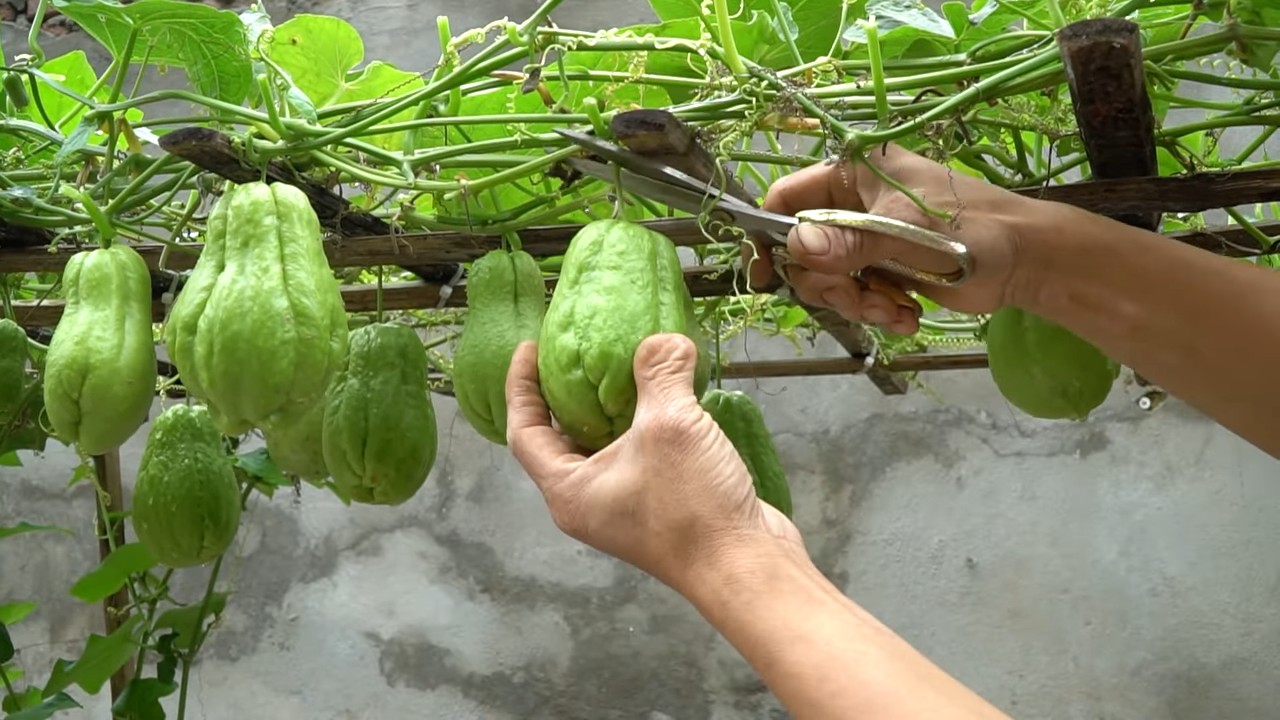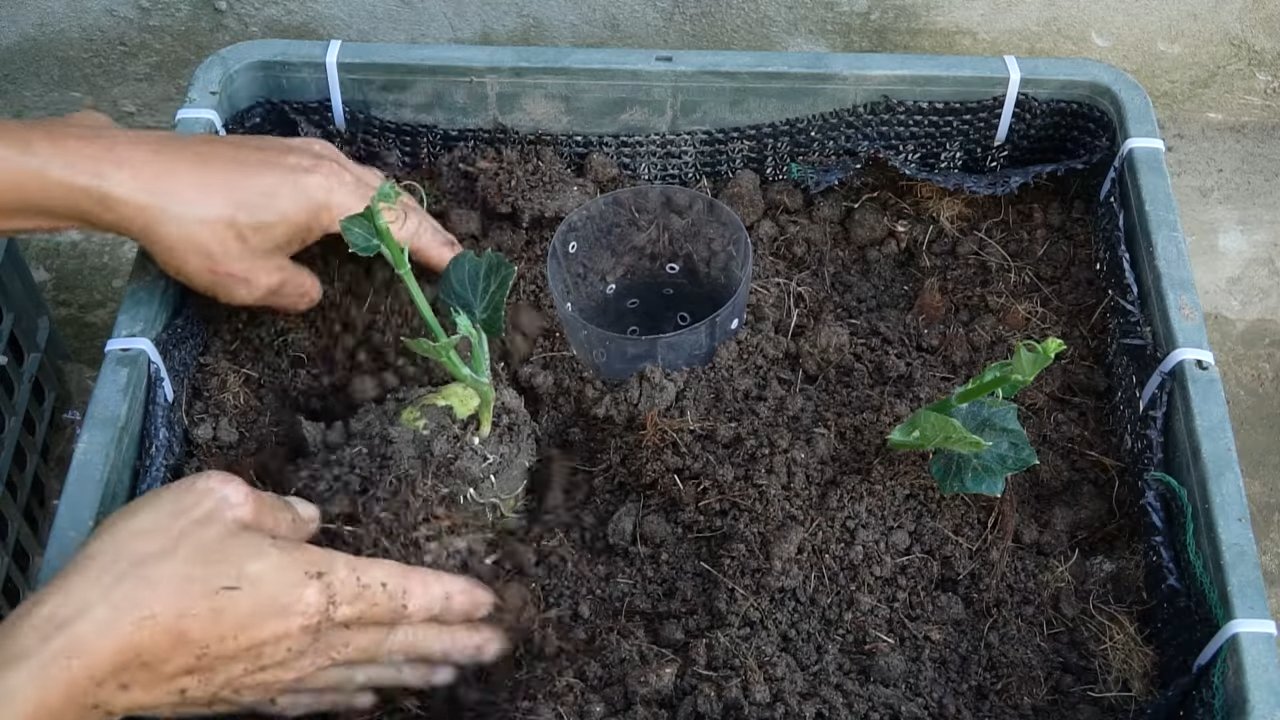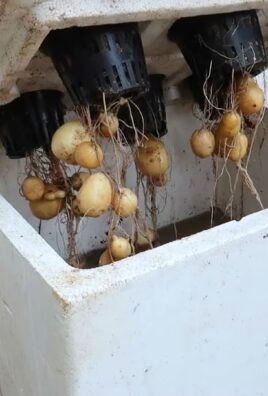Grow Chayote Terrace Garden: Ever dreamt of transforming your bland terrace into a lush, edible paradise overflowing with vibrant greenery and delicious, homegrown produce? I know I have! Imagine stepping outside your door and harvesting fresh, crisp chayote squash right from your own urban oasis. This isn’t just a pipe dream; it’s entirely achievable with a little know-how and some DIY spirit!
Chayote, also known as vegetable pear or mirliton, has a rich history, particularly in Mesoamerica, where it has been cultivated for centuries. It’s a versatile and nutritious vegetable, used in countless dishes from soups and stews to salads and stir-fries. But beyond its culinary appeal, growing your own chayote offers a unique connection to nature and a sense of accomplishment that’s hard to beat.
Why should you embark on this DIY adventure? Well, for starters, growing your own food is incredibly rewarding. Plus, you’ll have access to fresh, organic produce without the hefty price tag or the environmental concerns associated with commercially grown vegetables. More importantly, learning how to grow chayote terrace garden successfully means you’re contributing to a greener, more sustainable lifestyle, one delicious squash at a time. In this article, I’ll share my favorite tips and tricks to help you create a thriving chayote terrace garden, even if you’re a complete beginner. Get ready to roll up your sleeves and transform your terrace into a bountiful haven!

Creating Your Own Bountiful Chayote Terrace Garden
Hey there, fellow gardening enthusiasts! I’m so excited to share my experience with growing chayote squash on a terrace. It’s a fantastic way to maximize space, enjoy fresh produce, and add a touch of green to your urban or suburban landscape. Chayote, also known as vegetable pear or mirliton, is a versatile and prolific vine that can provide you with a ton of delicious squash. Let’s dive into how you can create your own thriving chayote terrace garden!
Understanding Chayote and Terrace Gardening
Before we get our hands dirty, let’s quickly cover the basics. Chayote is a warm-season perennial vine, meaning it can live for several years in frost-free climates. It needs a strong support structure to climb on, and a terrace provides an excellent foundation for this. Terrace gardening, in general, is a method of creating leveled planting areas on a slope or uneven ground. This not only prevents soil erosion but also allows for better water management and increased planting space.
Materials You’ll Need
To get started, gather these essential materials:
* **Chayote Fruit:** You’ll need a mature chayote fruit to sprout. Look for one that’s starting to show signs of germination (a small sprout emerging from the end).
* **Large Containers or Raised Beds:** Choose containers that are at least 24 inches in diameter and depth. Raised beds are also a great option if you have the space.
* **Well-Draining Soil:** A mix of potting soil, compost, and perlite or vermiculite works well.
* **Trellis or Support Structure:** This is crucial for the chayote vine to climb. A sturdy trellis, fence, or even a pergola will do the trick.
* **Gardening Gloves:** To protect your hands.
* **Watering Can or Hose:** For regular watering.
* **Fertilizer:** A balanced fertilizer or compost tea to feed your plants.
* **Pruning Shears:** For trimming the vine as needed.
* **Mulch:** To retain moisture and suppress weeds.
Step-by-Step Guide to Growing Chayote on a Terrace
Here’s a detailed breakdown of the process, from sprouting the fruit to harvesting your first chayote squash:
Phase 1: Sprouting the Chayote Fruit
This is the most crucial step, as it determines whether your chayote plant will thrive.
1. **Prepare the Fruit:** Select a mature chayote fruit that shows signs of sprouting. If you can’t find one with a sprout, you can encourage germination by placing the fruit in a warm, humid environment. I usually wrap mine in a damp paper towel and place it in a plastic bag for a few weeks, checking regularly for sprouts.
2. **Planting the Fruit:** Once you see a sprout emerging, it’s time to plant the fruit. Fill a container with well-draining soil. Make a hole in the center, large enough to accommodate the fruit.
3. **Positioning the Fruit:** Place the chayote fruit horizontally in the hole, with the sprout pointing upwards. Leave the top of the fruit exposed.
4. **Covering the Fruit:** Gently cover the fruit with soil, leaving the sprout exposed. Water thoroughly.
5. **Providing Warmth and Moisture:** Keep the soil consistently moist but not waterlogged. Place the container in a warm, sunny location.
6. **Waiting for Growth:** It may take several weeks for the sprout to develop into a vine. Be patient and continue to provide warmth, moisture, and sunlight.
Phase 2: Transplanting and Setting Up the Terrace Garden
Once your chayote vine has developed several leaves and a strong root system, it’s time to transplant it to its permanent home on your terrace.
1. **Preparing the Container or Raised Bed:** Fill your chosen container or raised bed with well-draining soil. Ensure that the container has drainage holes to prevent waterlogging.
2. **Setting Up the Trellis:** Before transplanting, set up your trellis or support structure. Make sure it’s sturdy enough to support the weight of the mature chayote vine, which can become quite heavy. I personally prefer using a strong metal trellis attached to the terrace railing.
3. **Transplanting the Seedling:** Carefully remove the chayote seedling from its container, being gentle with the roots.
4. **Planting the Seedling:** Dig a hole in the center of the container or raised bed, large enough to accommodate the root ball. Place the seedling in the hole and gently backfill with soil.
5. **Watering Thoroughly:** Water the newly transplanted seedling thoroughly.
6. **Guiding the Vine:** Gently guide the vine towards the trellis and encourage it to start climbing. You can use soft ties or clips to secure the vine to the trellis.
Phase 3: Caring for Your Chayote Vine
Now that your chayote vine is established on your terrace, it’s time to provide the ongoing care it needs to thrive.
1. **Watering:** Water regularly, especially during hot and dry weather. Chayote vines need consistent moisture to produce abundant fruit. Check the soil moisture regularly and water when the top inch feels dry.
2. **Fertilizing:** Feed your chayote vine with a balanced fertilizer or compost tea every few weeks. This will provide the nutrients it needs to grow and produce fruit. I like to use a liquid fertilizer diluted to half strength.
3. **Pruning:** Prune the vine regularly to encourage branching and fruit production. Remove any dead or yellowing leaves. You can also trim the vine to control its size and shape.
4. **Pest and Disease Control:** Monitor your chayote vine for pests and diseases. Common pests include aphids, spider mites, and squash bugs. You can control these pests with insecticidal soap or neem oil. Diseases are less common, but powdery mildew can sometimes be a problem. Ensure good air circulation and treat with a fungicide if necessary.
5. **Mulching:** Apply a layer of mulch around the base of the plant to retain moisture, suppress weeds, and regulate soil temperature. Organic mulches like straw or wood chips are excellent choices.
6. **Sunlight:** Chayote needs at least 6-8 hours of sunlight per day to thrive. Make sure your terrace location provides adequate sunlight.
Phase 4: Harvesting Your Chayote Squash
After a few months of care, your chayote vine should start producing fruit.
1. **Knowing When to Harvest:** Chayote squash is typically ready to harvest when it’s about 4-6 inches long and light green in color. The skin should be smooth and firm.
2. **Harvesting the Squash:** Use pruning shears or a sharp knife to cut the squash from the vine. Leave a short stem attached to the fruit.
3. **Storing the Squash:** Chayote squash can be stored in the refrigerator for several weeks.
4. **Enjoying Your Harvest:** Chayote squash is incredibly versatile and can be used in a variety of dishes. You can eat it raw in salads, sauté it with vegetables, add it to soups and stews, or even pickle it.
Tips for Success
Here are a few extra tips to help you succeed with your chayote terrace garden:
* Choose the Right Variety: While most chayote varieties are similar, some may be better suited to your climate and growing conditions. Do some research to find a variety that’s known to thrive in your area.
* Provide Adequate Support: A strong and sturdy trellis is essential for supporting the weight of the mature chayote vine. Make sure your trellis is well-anchored and can withstand strong winds.
* Be Patient: Chayote vines can take some time to establish and start producing fruit. Don’t get discouraged if you don’t see results immediately. With proper care, your vine will eventually reward you with a bountiful harvest.
* Protect from Frost: If you live in an area with occasional frost, protect your chayote vine by covering it with a blanket or tarp. Chayote is sensitive to frost and can be damaged by freezing temperatures.
* Consider Companion Planting: Planting beneficial companion plants near your chayote vine can help to attract pollinators and repel pests. Some good companion plants for chayote include marigolds, nasturtiums, and basil.
* Save Seeds: If you want to grow more chayote plants in the future, you can save the seeds from your harvested squash. Simply allow the squash to mature fully, then extract the seed and dry it before storing it in a cool, dry place.
Troubleshooting Common Problems
Even with the best care, you may encounter some problems while growing chayote. Here are some common issues and how to address them:
* Lack of Fruit Production: If your chayote vine is growing well but not producing fruit, it could be due to a lack of pollination. Chayote flowers are pollinated by insects, so encourage pollinators to visit your garden by planting flowering plants nearby. You can also try hand-pollinating the flowers yourself.
* Yellowing Leaves: Yellowing leaves can be

Conclusion
So, there you have it! Transforming your outdoor space into a thriving chayote terrace garden is not only achievable but also incredibly rewarding. We’ve walked you through the essential steps, from selecting the perfect location and preparing the soil to nurturing your chayote vine and harvesting its bounty. But why is this DIY project a must-try?
Firstly, growing your own chayote offers unparalleled freshness and flavor. Imagine stepping out into your garden and picking a crisp, vibrant chayote squash, knowing exactly where it came from and how it was grown. The taste difference compared to store-bought varieties is truly remarkable. You’ll experience a subtle sweetness and a satisfying crunch that will elevate your culinary creations.
Secondly, a chayote terrace garden is a sustainable and eco-friendly choice. By growing your own food, you reduce your reliance on commercially produced crops, which often involve long-distance transportation and potentially harmful pesticides. You’ll be contributing to a healthier planet while enjoying delicious, homegrown produce.
Thirdly, creating a chayote terrace garden is a fantastic way to connect with nature and engage in a fulfilling hobby. Gardening is known to reduce stress, improve mood, and provide a sense of accomplishment. Watching your chayote vine flourish and produce an abundance of fruit is an incredibly satisfying experience.
But the benefits don’t stop there! Consider these exciting variations and suggestions to personalize your chayote terrace garden:
* **Vertical Gardening:** If you’re short on space, explore vertical gardening techniques. Train your chayote vine to climb up a trellis, fence, or even a specially designed vertical garden structure. This will maximize your growing area and create a stunning visual display.
* **Companion Planting:** Enhance your chayote’s growth and deter pests by incorporating companion plants. Marigolds, basil, and nasturtiums are excellent choices that will attract beneficial insects and add beauty to your garden.
* **Chayote Varieties:** Experiment with different chayote varieties to discover your favorites. Some varieties have smooth skin, while others have prickly skin. Some are green, while others are white or yellow. Explore the diverse world of chayote and find the perfect varieties for your taste.
* **Seed Saving:** Once you’ve successfully grown your chayote, consider saving the seeds for future planting. This will allow you to perpetuate your favorite varieties and become a self-sufficient gardener.
* **Creative Culinary Uses:** Don’t limit yourself to traditional chayote recipes. Explore the versatility of this vegetable by incorporating it into stir-fries, salads, soups, and even desserts. Its mild flavor makes it a perfect canvas for a wide range of culinary creations.
We are confident that you will find immense joy and satisfaction in creating your own chayote terrace garden. It’s a project that combines sustainability, delicious food, and a connection with nature. So, what are you waiting for? Grab your gardening tools, prepare your soil, and embark on this exciting adventure.
We encourage you to try this DIY trick and share your experiences with us. Post photos of your chayote terrace garden on social media using the hashtag #ChayoteTerraceGarden and let us know what you’ve learned along the way. We can’t wait to see your thriving gardens and hear your inspiring stories! Remember, growing your own food is a rewarding journey, and we’re here to support you every step of the way. Happy gardening!
Frequently Asked Questions (FAQ)
1. What is the best time of year to plant chayote?
The ideal time to plant chayote is in the spring, after the last frost has passed. Chayote requires warm temperatures and a long growing season to thrive. In warmer climates, you may be able to plant chayote in the fall for a winter harvest. However, in colder regions, it’s best to wait until spring to ensure the plant has enough time to mature before the first frost.
2. How much sunlight does chayote need?
Chayote vines need at least 6-8 hours of direct sunlight per day to produce a bountiful harvest. Choose a location for your terrace garden that receives ample sunlight throughout the day. If you live in a particularly hot climate, some afternoon shade may be beneficial to prevent the leaves from scorching.
3. What type of soil is best for growing chayote?
Chayote prefers well-draining soil that is rich in organic matter. Amend your soil with compost, aged manure, or other organic materials to improve its fertility and drainage. A slightly acidic to neutral soil pH (around 6.0 to 7.0) is ideal for chayote growth.
4. How often should I water my chayote vine?
Water your chayote vine regularly, especially during dry periods. Keep the soil consistently moist, but avoid overwatering, which can lead to root rot. A good rule of thumb is to water deeply whenever the top inch of soil feels dry to the touch. Mulching around the base of the plant can help retain moisture and suppress weeds.
5. How do I fertilize my chayote vine?
Feed your chayote vine with a balanced fertilizer every few weeks during the growing season. Look for a fertilizer that is high in phosphorus, which promotes fruit production. You can also supplement with organic fertilizers such as compost tea or fish emulsion. Avoid over-fertilizing, as this can lead to excessive vegetative growth at the expense of fruit production.
6. How do I train my chayote vine to grow on a terrace?
Chayote vines are vigorous climbers and require a strong support structure to grow on a terrace. Provide a trellis, fence, or other sturdy support for the vine to climb on. As the vine grows, gently guide the tendrils towards the support structure and tie them in place if necessary. Prune the vine regularly to encourage branching and fruit production.
7. How long does it take for chayote to produce fruit?
Chayote typically takes 4-6 months to produce fruit after planting. The exact time will depend on the variety, climate, and growing conditions. Be patient and continue to provide proper care, and you will eventually be rewarded with a bountiful harvest.
8. How do I know when chayote is ripe?
Chayote is typically harvested when it is still young and tender. The skin should be smooth and unblemished, and the fruit should feel firm to the touch. Avoid harvesting chayote that is overly mature, as it can become tough and fibrous.
9. How do I store chayote?
Store chayote in a cool, dry place, such as the refrigerator. It will keep for several weeks if stored properly. Avoid storing chayote near ethylene-producing fruits, such as bananas and apples, as this can cause it to ripen too quickly.
10. Are there any pests or diseases that affect chayote?
Chayote is generally resistant to pests and diseases, but it can be susceptible to certain problems, such as aphids, spider mites, and powdery mildew. Monitor your plants regularly and take action if you notice any signs of infestation or disease. Organic pest control methods, such as insecticidal soap or neem oil, can be effective in controlling pests. Proper air circulation and avoiding overwatering can help prevent powdery mildew.




Leave a Comment